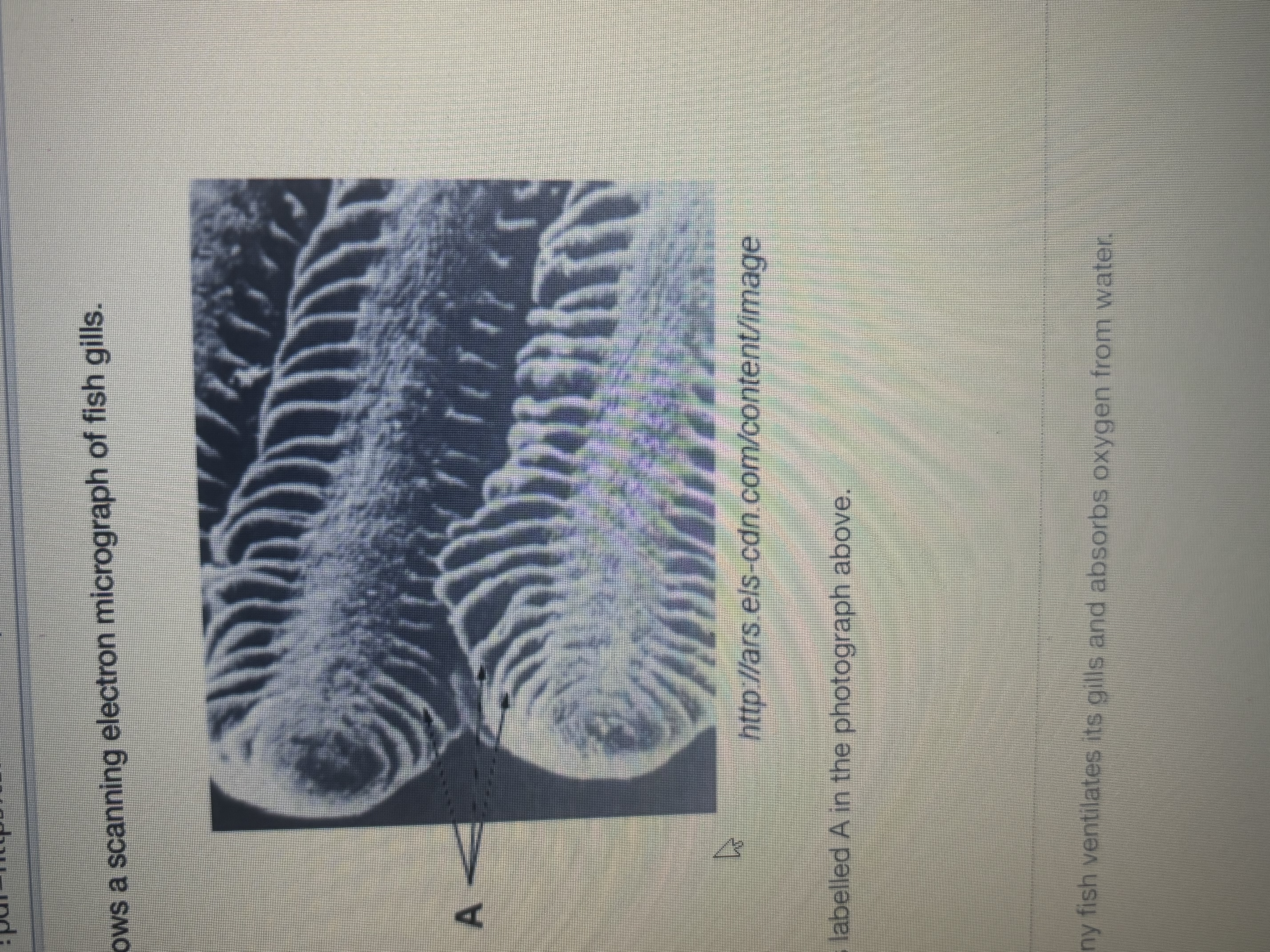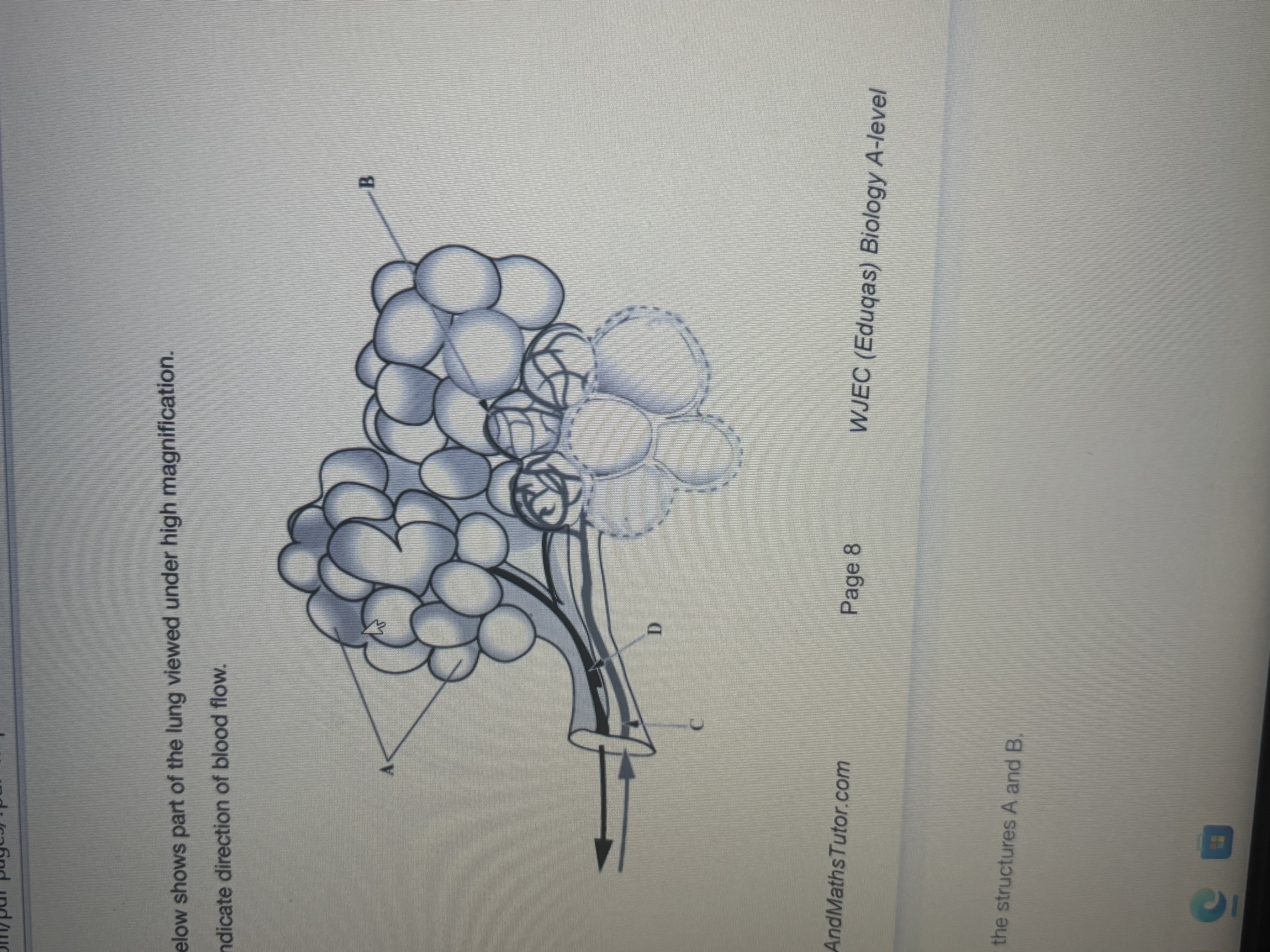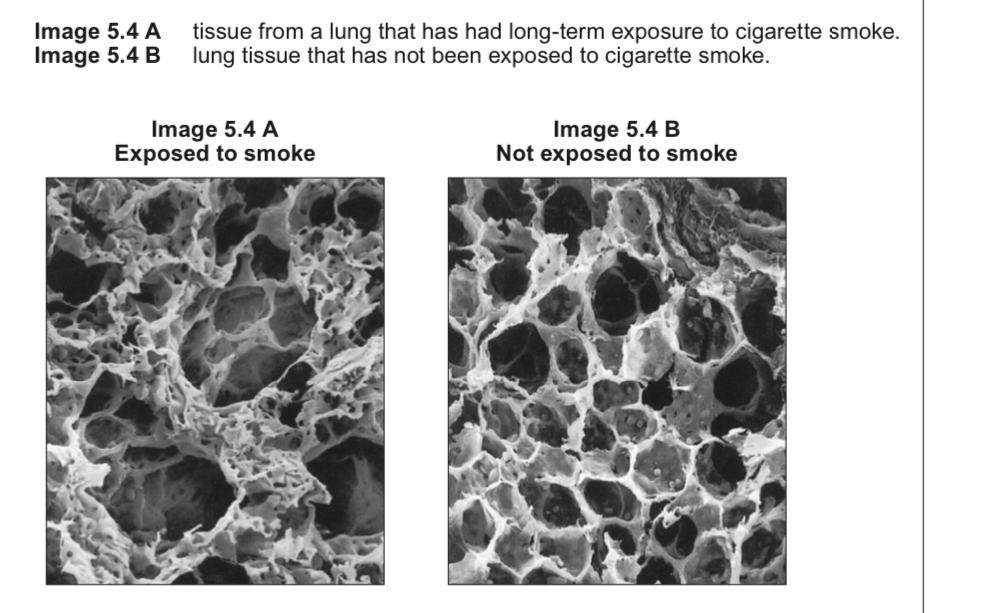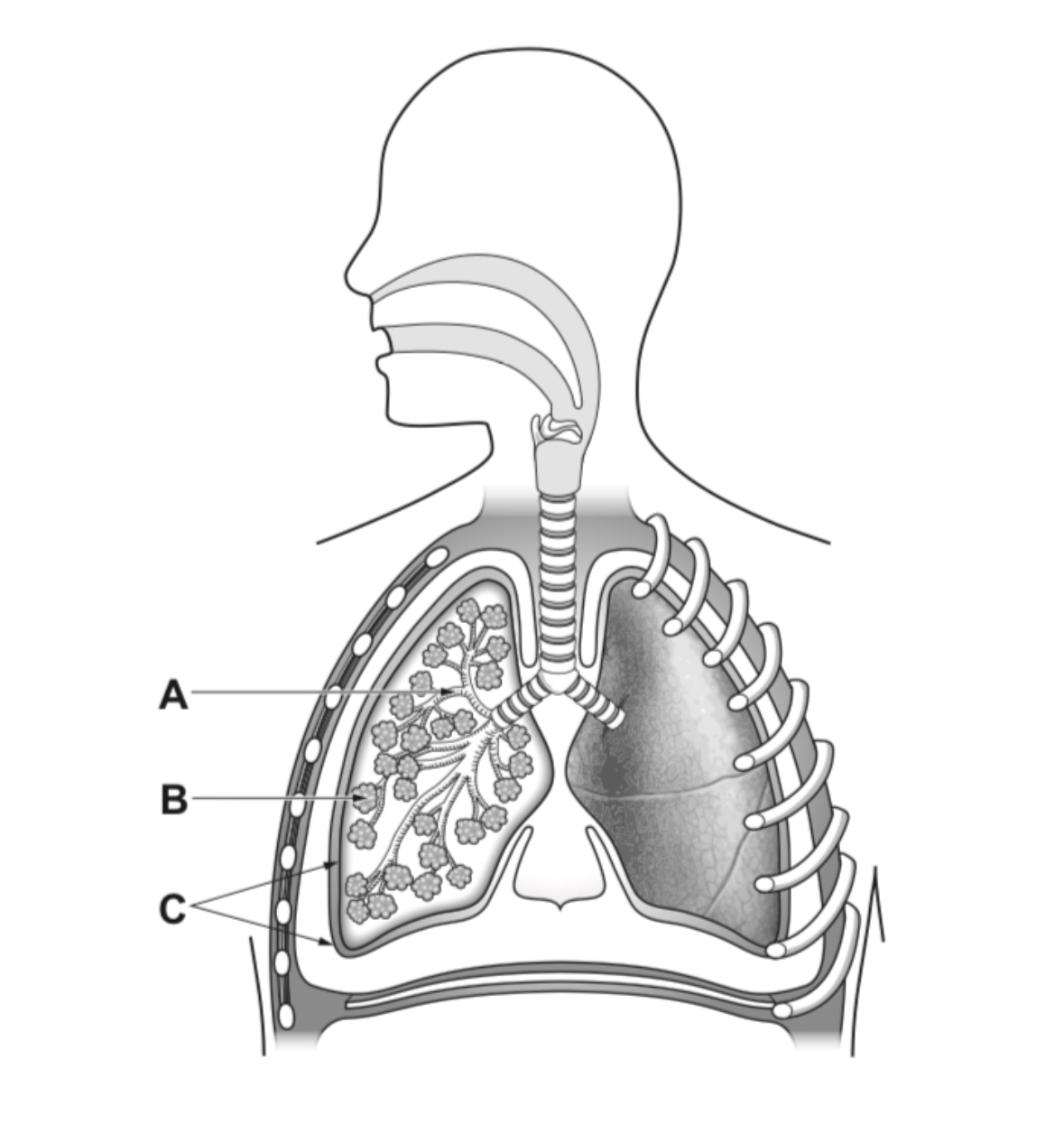GE in plants and humans
1/31
There's no tags or description
Looks like no tags are added yet.
Name | Mastery | Learn | Test | Matching | Spaced |
|---|
No study sessions yet.
32 Terms
describe and explain the process of inspiration in a mammal
Intercostal muscles contract and ribs move up and out
Diaphragm muscles contract and diaphragm flattens
Internal volume of thorax increases
Pressure in lungs/ thorax decreases
Higher/ difference in air pressure outside forces air into the lungs
Tracheoles are found on the outside of the muscle fibres suggest why the max diameter of a muscle fibre never exceeds 20 microm in diameter
Diffusion pathway would be too long, ensures a short diffusion pathway
Speed of diffusion would be too slow
To supply sufficient oxygen
9 marker 2024 a level
Describe the change in fluid level in the tracheoles during flight suggest how this change benefits gas exchange during flight
Less fluid, fluid moves into muscle fibres, fluid level decreases
More area for gas exchange and shorter diffusion pathway

Name the structure labelled A in photograph thin strands coming out of fish gills
Gill lamellae/ gill plates
Explain how inspiration is brought about
Contraction of intercostal muscles and diaphragm or Ribcage cloves up and out and diaphragm flattens/ contracts
Increased volume and decreases pressure so air moved into the lungs

Part of lung labelled
A- alveoli
B- capillary network
Blood vessels that connect C and D to the heart respectively - pulmonary artery and pulmonary vein
Important structure features of alveoli
Large SA/ highly folded
large number of capillaries
Thin alveolus walls/ one cell thick
Describe and explain how the alveoli are adaptations for efficient gas exchange
They have many alveoli which increases or provides a large SA for gas exchange, alveoli walls are thin/ one cell thick providing a short diffusion pathway/ distance for oxygen to enter the blood
Describe how blood vessels are adaptations for efficient gas exchange
many blood capillaries/ vessels are good blood supply, capillary network to maintain stepp concentration gradient
Describe and explain the process of expiration in mammals
Intercostal muscles relax allowing Ribcage to move downwards and inwards
The diaphragm muscles relaxes and becomes dome shaped
This decreases the volume of the thorax
Which increases the pressure inside the lungs
Forcing/ pushing air out of the lungs/ moving air out of the lungs down a pressure gradient
Mammals have a high oxygen demand suggest why they need a complex ventilation mechanism
Have high metabolic rates
Ventilation maintains a steep concentration gradient at the alveoli/ sufficient/ enough/ more oxygen supplied to the alveoli/ GE surface
Give two adv of humans having internal gas exchange surfaces
Minimise/ reduce heat and water loss
State one medical use of artificial surfactant and explain why it would be needed
Lowers surface tension do the fluid in the alveoli to prevent alveoli from collapsing
Premature babies/ lung transplants/ respiratory distress syndrome
Explain how the outwards movement of the Ribcage causes the changes in pleural and alveolar pressures during breathing in
Intercostal muscles contract and expand the Ribcage
Outer pleural membranes pulled out by expanding the Ribcage
Pleural pressure reduced
Inner pleural membrane pulls on lungs and expands alveoli
Alveolar pressure lowers
Air moves in when alveolar pressure is lower than atmospheric pressure and increases alveolar pressure
Plant adaptation for efficient diffusion of gases
Stomata
Large air spaces, large SA in spongy mesohpyll
Thin leaf / short diffusion distance
Moisture on cell surface
Explain how stomata are opened
K+ or malate in guard cells/ cytoplasm/ vacuole
Reduces their water potential so water enters guard cells by osmosis and trig or pressure increases/ cell becomes turgid, ends of guard cell walls are thinner central wall is thicker, ends expand which opens stomata cells are forced apart
Main RS for fish, mammal, earthworm, insect
Fish- gills / lamellae
Mammal- alveoli NOT lungs
Earthworms- skin
Insect- tracheoles NOT trachea
Explain how in a mammal the Ribcage diaphragm and pleural membranes are involved in lowering the pressure in the alveoli to below atmospheric pressure during inhalation
Ribcage moves up/ expands
Diaphragm flattens/ contracts/ moves down
Pull pleural membranes out which expands volume of the lungs and reduces pressure
Two ways an O concent gradient is maintained between alveolar air and blood
Explain why the rate of GE between the air spaces of the leaf and the leaf tissues is lower than between alveoli and blood of a mammal 1b i
Describe how the muscles of the thorax together with the pleural membranes cause the change in alveolar pressure during inspiration
External intercostal muscles contract and rib cage lifts upwards and outwards
Diaphragm muscles contract and diaphragm flattens
Outer pleural membrane pulls inner pleural membrane
Outward/ reduced pressure
% of CO2 in exhaled air is lower than in alveolar air explain why
Some CO2 remains in the trachea/ bronchi/ alveoli
Exhaled air has a slightly higher % of nitrogen than inhaled air despite the gas being inert in mammals
The proportions/ quantities of other gases have changed (so N is a different proportion of the gas mixture)

Describe a difference in appearance of the two lung samples and explain how this would decrease GE efficiency
Alveoli/ air spaces have become larger, air spaces have broken down
Reduced S.A. for gas gas exchange/ diffusion
Tissue between alveoli/ air spaces have become thickened
Increased diffusion distance for O/ CO2
Explain mechanism of stomatal opening which allows GE to take place
K+ pumped/ using AT into guard cells
Starch converted to malate ions
Lowering WP in guard cells
Water moves in by osmosis
Guard cells become turgid
Uneven beding of guard cells due to thickening of cell wall
Explain how the volume of the thorax is changed during inspiration
External intercostal muscles contract and Ribcage moves upwards and outwards
Diaphragm contracts and flattens
Role of pleural membranes
Explain change in alveolar pressure during inspiration
Pressure decreases in alveoli as thoracic volume increases
Pressure increases as air enters alveoli
During expiration there is a risk of the collapse of the alveoli due to positive pressure, suggest how alveoli are adapted to deal with this
Alveoli coated in surfactant
Reduces surface tension

A- bronchiole
B- alveolus
C- pleural membranes

Explain how a feature visible in photograph ensures the trachea can function effectively during inspiration
Ring of cartilage
Prevents trachea from collapsing due to air pressure decrease during inspiration
Explain how muscles involved in the process of inspiration bring about changes in pressure
External intercostal muscles contract and ribs move upwards and outwards
Diaphragm contracts and flattens
Role of pleural membranes
Volume do thorax increases therefore pressure decreases
Air pressure in alveoli us falls below atmospheric pressure so air rushes in